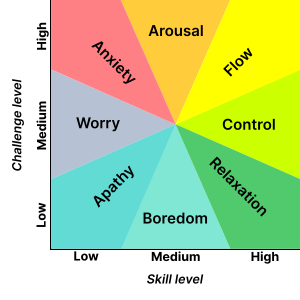Learning concepts and the state of Flow.
Applying different forms of media to learning has become more accessible and more important to better learning outcomes. When creating multimedia approaches to learning, understanding the different theories that accompany this is crucial. Whether it be in a workplace of an academic environment, the learning theories and concepts can be utilized to best express the argument/lesson you are trying to showcase. One of these theories is the concept of Flow. When people are engaged and interested in a goal orientated project, this state of flow creates motivation and energy to fulfill the task. The concept of Flow is important when understanding the best learning environment, and the steps it may take to get there. Getting into a state of Flow has become more difficult with increased online activities. Over the years it seems as if society’s attention span has decreased with the introduction and indoctri nation of social media. Finding different ways to become more engaged and aim for the best results in an online environment has become more important. Transferring the core concepts of flow, such as choice and independent agency, within a goal orientated project can be useful for learning online as it promotes engagement and focused attention on the task.
nation of social media. Finding different ways to become more engaged and aim for the best results in an online environment has become more important. Transferring the core concepts of flow, such as choice and independent agency, within a goal orientated project can be useful for learning online as it promotes engagement and focused attention on the task.


